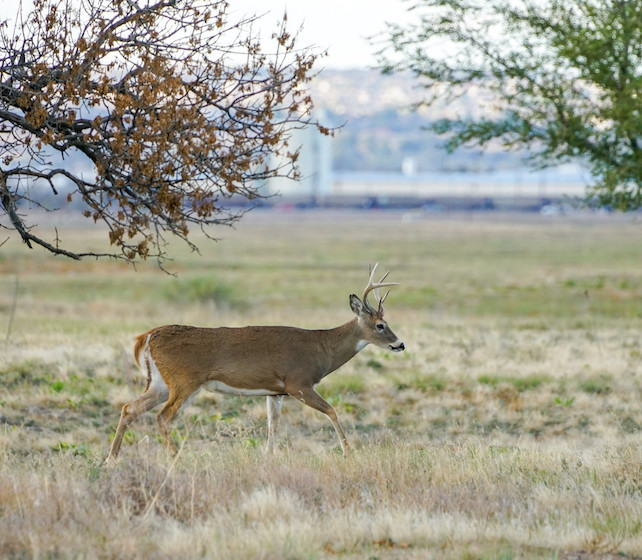Infection
COVID-19 Virus Evolving Rapidly in White-Tailed Deer, Study Finds
The coronavirus behind the COVID-19 pandemic is far from gone. Not only is it still widely infecting humans, but according to a new study, the virus also commonly leaps from us to white-tailed deer, where it seems to be evolving even more rapidly.
The origins of SARS-CoV-2 remain mysterious, but aside from having possibly jumped from another species to us, the virus has also proven capable of jumping from us to a variety of other mammals.
According to previous research, the virus may now be common among white-tailed deer (Odocoileus virginianus) in some parts of the United States.
In the new study, researchers looked for SARS-CoV-2 infections by swabbing noses of free-ranging deer across Ohio. Between November 2021 and March 2022, they used nasal swabs to sample 1,522 deer found in 83 of the state’s 88 counties.
A genetic analysis of the swabs showed active SARS-CoV-2 infections in 10 percent of deer, with at least one positive case found in 59 percent of counties tested.
The researchers also collected blood samples from a number of the deer to look for evidence of previous infections, indicated by the presence of specific antibodies. Based on their results, they estimate nearly 24 percent of deer in Ohio have been infected by SARS-CoV-2 at some point.
On top of that, genomic analysis suggests at least 30 of the active infections found in deer were introduced by humans.
“We generally talk about interspecies transmission as a rare event, but this wasn’t a huge sampling, and we’re able to document 30 spillovers. It seems to be moving between people and animals quite easily,” says study co-author Andrew Bowman, a veterinary epidemiologist at Ohio State University.
White-tailed deer may serve as a reservoir for the virus, the researchers note, potentially spreading it on to other wildlife, livestock, and humans.
“And the evidence is growing that humans can get it from deer – which isn’t radically surprising,” Bowman says. “It’s probably not a one-way pipeline.”
Bowman and his colleagues detected the coronavirus in Ohio deer at nine sites in December 2021, finding it was most prevalent near dense human populations. Without broader monitoring, however, the bigger picture remained murky.
“We expanded across Ohio to see if this was a localized problem – and we find it in lots of places, so it’s not just a localized event,” Bowman says.
“Some of the thought back then was that maybe it’s just in urban deer because they’re in closer contact with people,” he adds. “But in rural parts of the state, we’re finding plenty of positive deer.”
Many of the deer showed evidence of exposure to the highly contagious delta variant, which was the most prevalent strain among humans in the US during the study period. There were also signs of the alpha variant, which had peaked among humans earlier in 2021.
The genetic makeup of delta variants in deer matched those spreading among humans at the time, the researchers report. This suggests spillover events occurred, in which the virus “spilled” from our species into theirs.
After a deer somehow caught the coronavirus from a human, the virus apparently began to spread among wild deer in clusters, the study found, with some clusters expanding beyond a single county.
“There’s probably a timing component to what we found – we were near the end of a delta peak in humans, and then we see a lot of delta in deer,” Bowman says.
“But we were well past the last alpha detection in humans,” he adds. “So the idea that deer are holding onto lineages that have since gone extinct in humans is something we were worried about.”
SARS-CoV-2 evolves more rapidly in deer than they do in humans, according to an examination of mutations in the viral samples, although it remains unclear what exactly that entails for us. It is plausible the virus could evolve further in deer and spread back to us, but even if it does, the study suggests COVID vaccination offers protection.
Bowman and his colleagues exposed Syrian golden hamsters – a common model animal in SARS-CoV-2 research – to coronavirus variants taken from white-tailed deer, finding that vaccinated hamsters became less sick from infection than unvaccinated hamsters.
Even if coronavirus variants from deer don’t pose a direct threat to us, however, they could still wreak havoc with domesticated animals or wildlife. According to the data so far, Bowman notes, about 70 percent of free-ranging white-tailed deer in Ohio still haven’t been exposed to SARS-CoV-2.
“Having that animal host in play creates things we need to watch out for,” he says. “If this trajectory continues for years and we have a virus that becomes deer-adapted, then does that become the pathway into other animal hosts, wildlife or domestic? We just don’t know.”
The study was published in Nature Communications.

